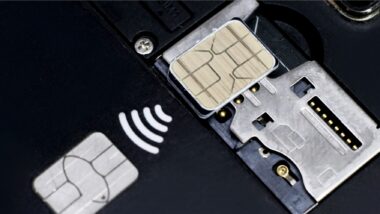
I was recently in a very inspiring customer meeting where we spent more than three hours speaking about the challenges of smoothing the customer experience when it comes to the enrollment process.
In many organizations across multiple industries people primary concern is the customer. In their teams, they spend years developing low-friction engagement mechanisms designed to allow customers to securely access services whenever, and from wherever they want. In retail, this covers both the ecommerce and bricks-and-mortar shopping experience. In banking, automation and digital transformation projects are helping to tackle fraud while opening up digital services to customers.
This omnichannel approach is something that is right at the core of every mobile operator. Each aims to offer a seamless, high-quality customer experience across every contact channel. And it is critical they do because in this Digital ecosystem smooth customer acquisition is essential and tolerance for heavy process is close to zero.
Overcoming legacy systems
Building an omnichannel customer acquisition process is not easy because legacy systems aren’t always instantly compatible with a hassle-free user experience.
But there are steps companies can take that will set them on the path. For instance, we spoke previously about “Preventing ID fraud through automated customer enrolment”. Here advances have created real opportunity for carriers to deploy cost-effective and engaging customer acquisition strategies.
Companies that want to move towards an omnichannel approach can begin by applying small but important improvements such as data capture or identity document verification that are able to be implemented separately or as part of a full onboarding process.
Omnichannel customer acquisition

Until recently, most telecom operators offered customers range of products and services through physical and digital channels. The primary goal was to capture as much market share as fast as possible. The physical stores, customer service centers and reseller networks have been the sales engine, while self-service channels have been all about convenient transactions.
This model no longer works as market saturation is now higher than ever. The new differentiators–and areas of opportunity—are customer loyalty, experience and cross-selling (and upselling) new attractive offers.
Telecom companies are facing massive digital disruption and can no longer afford not to have an omnichannel strategy. But for the implementation to go smoothly and be successful, several aspects must come together. Operators need an understanding of:
- the customer journey and how the process currently works
- the step-by-step improvements that will reduce abandonment rates
- low-friction engagement mechanisms
- customer-centric workflows and how subscriber information is managed
By adding digital acquisition capabilities across all channels, companies can reduce some manual processes.
How digital identity management aids omnichannel strategies
We have spoken about Trusted Digital IDs before and it’s worth thinking about the role they play in digital transformation projects. Here’s a quick summary of what they can bring to any company’s omnichannel strategy:
- Trusted Digital ID significantly reduces enrolment time and operational costs. This applies to both new account creation and return customers accessing new services. Companies benefits from a reduction in manual processes, paper work, data validation, handling and most importantly verifying the identity of the user.
- Tangible improvement in sales. Cross and upselling are now a must for any company. Once a customer creates their Digital ID, operators can offer multiple services across any channel, and enable them with a few clicks.
- Reduction in abandonment rates. By implementing technologies that enable immediate access to services across all channels, the customer enjoys a much better experience. And all they need to do is verify their ID once.
How does Trusted Digital Identity help?
There are many technologies available that make the most of a Trusted Digital ID deployment:
- Data Capture: You can now quickly extract data from an image of a identification document and then auto-populate fields in an existing database, CRM or application. Now paper or image-based documents are transformed into business ready data.
- Cellular carrier integration: A customer’s carrier can now pre-populate address, telephone number, and other information automatically.
- Real time ID verification: Knowing your customer is increasingly vital. Today document verification can be checked against a pre-defined Templates Database that contains a global list of reference identity documents such as passports, identity cards, residence permits and driving licenses.
- The aim is to verify that the government-issued ID that is presented is genuine. Most of the solutions are near real time, requiring 20 to 60 seconds to complete forensic checks.
- Facial biometrics: Telecom Operators can now conduct Identity verification with biometric facial recognition to determine if the person is physically who they say they are. For remote use cases we recommend the use of a biometric test such as Facial Recognition Match after ID image capture.
- Liveness Detection: This prevents fraudsters from using static images such as printed photos, pre-recorded video or photos on a screen. They can even detect sculptures or models of heads! This is done via asking the subject to blink or move their head, with the system evaluating the user’s response.
- Watch list monitoring. Multiple solutions offer API-based access to a variety of regulatory data sources. These include politically exposed persons (PEP) list screening, as well as connecting to government database to check biometric and other information.
A good combination of different technologies can enable not only customer enrolment digitalization but also a highly flexible multi-channel process. MNOs, OEMs and other service providers can accelerate digital transformation, reduce fraud and comply with regulations.
If you’d like to hear more about Gemalto’s approach advancing your physical and digital channels across the widest possible array of solutions, do get in touch. I’m sure we’ll still be discussing the improvements to the customer experience for many years to come, but it’s clear the digital ecosystem is evolving at a significant pace, especially when it comes to realizing omnichannel aspirations.


